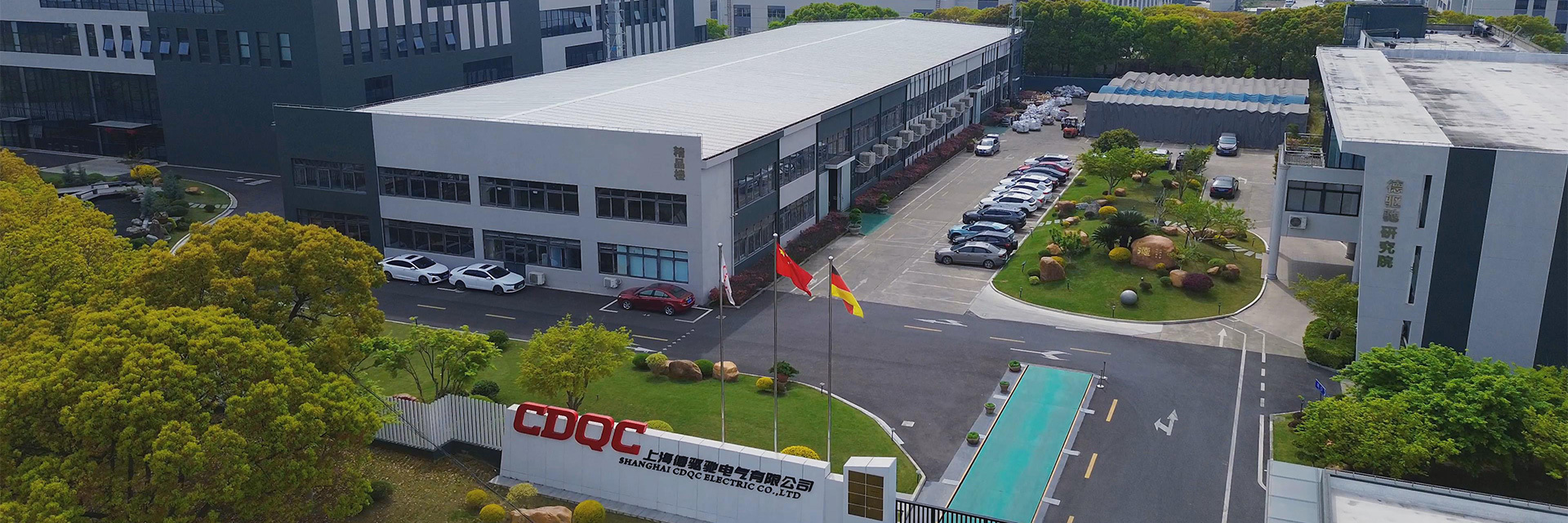In the field of automation and intelligent manufacturing, servo motors are the core driving force for industrial upgrading
Published Time:
2021-11-12
Author:
Author
Source:
Cloud Design
Summary
In the field of automation and intelligent manufacturing, technological innovation in servo motors is not only the "engine" that enables enterprises to break through market barriers, but also the core driving force for industrial upgrading. From the underlying logic of precise control to the application scenarios of high-end manufacturing, technological innovation capabilities directly determine an enterprise's voice in global competition. The following analysis is from directions of technological innovation, the construction of competitive barriers, and industrial value empowerment three dimensions, to explain why it is the key to core competitiveness:
I. Technological Innovation: The Core Variable Defining the "Generational Gap" of Servo Motors
Technological innovation in servo motors presents a **"three horizontal and three vertical" pattern**, horizontally covering three basic dimensions: control accuracy, response speed, and energy efficiency performance, and vertically extending to disruptive breakthroughs at the material, algorithm, and architecture levels:
1. Horizontal Breakthrough: Consolidating the Foundation of Precision Control
-
Precision Revolution
- Encoder Technology : From traditional photoelectric encoders (24-bit resolution) to magnetoelectric encoders, quantum encoders upgrade. For example, the EQN 1325 magnetoelectric encoder launched by Heidenhain (HEIDENHAIN) has a resolution of 27 bits (134,217,728 pulses/revolution), and its vibration resistance is improved by 50% (can withstand 20g shock).
- Error Compensation Algorithm : Introducing machine learning predictive control ,by training models with historical data, to correct the nonlinear errors of the mechanical system in advance (such as compensating for the thermal expansion error of the lead screw, improving accuracy to ±0.5μm).
-
Speed and Dynamic Performance Leap
- Motor Design : Using flat wire winding technology (such as the Yaskawa Sigma-7 series), the slot fill rate is increased by 20%, copper loss is reduced by 15%, and the motor response bandwidth exceeds 2.5kHz (a 66% increase over the previous generation).
- Driver Architecture : Silicon carbide (SiC) power devices replace traditional IGBTs, the switching frequency is increased to 100kHz, the current loop response time enters the microsecond level (<10μs), suitable for high-frequency start-stop scenarios (such as high-speed plugging and unplugging of electronic connectors).
-
Energy Efficiency and Reliability Upgrade
- Material Innovation : Samarium cobalt permanent magnets replace neodymium iron boron, the temperature resistance is increased from 200℃ to 350℃, suitable for extreme environments in aerospace; Ceramic bearings reduce the friction coefficient to 0.001, and the lifespan is extended by more than 3 times.
- Thermal Management Technology : Integrated micro-channel liquid cooling structure (such as Hiwin direct drive motor), the thermal density can reach 500W/cm³, and the winding temperature rise is controlled within 50K, meeting the requirements of 24-hour continuous full-load operation.
2. Vertical Disruption: Reconstructing the Technical Architecture of the Servo System
-
Integrated Design
- Drive and control integration : Integrating the driver and motor into the same housing (such as the Mitsubishi MR-J5-B series), the cable length is shortened by 90%, the anti-interference ability is improved, suitable for compact equipment (such as collaborative robot joint modules).
- Sensing and control integration : Built-in six-axis force sensor (such as the Kollmorgen AKD servo system), real-time monitoring of load force/torque (accuracy 0.1N·m), supporting human-machine collaboration safety control and flexible assembly.
-
Intelligent and Autonomous
- Embedded Edge Computing : Integrating AI chips (such as TI DRV8353M) in the driver to achieve real-time fault diagnosis (bearing wear prediction accuracy >90%) and energy efficiency optimization (adjusting the current according to the dynamic load, saving 20%-30% energy).
- Programming-free automation : Through a graphical interface (such as Beckhoff TwinCAT 3) drag-and-drop configuration of motion trajectories, without writing complex G code, reducing the threshold for use by small and medium-sized enterprises.
-
Communication Protocol Innovation
- TSN (Time Sensitive Networking) : Supports nanosecond-level synchronization accuracy, meeting the needs of coordinated control of more than 100 axes (such as semiconductor wafer handling robot arrays), reducing the synchronization error of traditional EtherCAT networks by 90%.
- Wireless Servo Technology : Using 5G millimeter-wave communication (such as Yaskawa Wireless Sigma), the transmission delay <1ms, suitable for real-time control of mobile robots (such as AGV clusters).
II. Technological Innovation Builds Competitive Barriers: From "Product Differentiation" to "Ecological Monopoly"
In the global servo market (over US$15 billion in 2023), technological innovation capabilities directly determine the competitive level of enterprises:
1. High-end Market: Technological Barriers Build Moats
-
Monopolized Fields :
- Lithography machine servo system : ASML's EUV lithography machine only uses a combination of THK linear servo motors + Renishaw laser interferometer, with positioning accuracy of ±0.1nm, and only 3 companies worldwide have the same technical capabilities.
- Aerospace servo motors Honeywell's radiation-resistant servo motors (radiation resistance: 10^5 Gy) from the United States monopolize the military satellite market, while domestic enterprises still need to overcome material and technological bottlenecks.
-
Patent Moat :
- Japanese companies (Panasonic, Yaskawa) hold over 30% of core patents in the field of permanent magnet synchronous motor control algorithms;
- German companies (Siemens, Bosch) dominate bus protocols (such as PROFINET) and industrial software ecosystems.
2. Mid-range market: competing for market share through innovation in cost-effectiveness
- Domestic Substitution Path :
- Huichuan Technology Through a strategy of "general-purpose servo + industry-specific custom algorithms," it launched a high-speed dispensing servo (response speed <20ms, price 40% lower than Panasonic) in the 3C industry, increasing its market share from 5% in 2018 to 18% in 2023.
- Hechuan Technology Development of integrated magnetic encoder (cost reduced by 30%, accuracy up to 23 bits), seizing the market for domestic robot joint modules and forming technological synergy with Estun and Siasun.
3. Emerging markets: forward-looking technology to secure future positions
- Humanoid Robot Track Tesla Optimus uses direct drive servo + torque control scheme, with a single joint cost exceeding US$2,000. Domestic enterprises such as Dazon Motor have launched products with the same specifications (cost
- New Energy Field CATL introduced servo press (accuracy ±0.01mm) to produce lithium battery electrodes, replacing traditional mechanical presses, increasing yield from 92% to 99%, and making technological innovation key to cost reduction.
III. Industrial Value of Technological Innovation: Driving the "Precision Revolution" of Intelligent Manufacturing
Technological breakthroughs in servo motors are not merely upgrades to individual products, but through the path of "single-point breakthrough—scenario penetration—ecosystem reconstruction," they reshape the global industrial chain pattern:
1. Empowering effect on manufacturing
- Semiconductor Industry Improved precision drives the process from 3nm to 2nm. Each generation of process upgrades requires a 50% increase in the positioning accuracy of the servo system, and the scale of equipment investment increases by 30%.
- Medical Equipment The accuracy of surgical robot servo motors reaches ±0.02mm, reducing the incision of minimally invasive surgery to within 2mm, promoting the popularization of precision medicine.
- Aerospace Servo direct drive technology increases the processing efficiency of aircraft structural parts by 40% while reducing surface roughness from Ra3.2μm to Ra0.8μm, reducing subsequent polishing processes.
2. Catalytic effect on emerging industries
- Quantum Computing Low-temperature servo motors (operating temperature -271℃) are used to control the ultra-low temperature environment of superconducting quantum bit chips, with an error of <±0.001℃. Technological innovation is the key to the engineering of quantum computers.
- Nuclear Fusion Device The servo system needs to control the position of the magnet in a strong magnetic field (>10T), with a positioning accuracy requirement of ±1μm. Currently, only companies such as Siemens have relevant technological reserves.
3. Reshaping impact on global competition
- Competition for Technological Sovereignty The United States, through the "Chips and Science Act," restricts the export of high-end servo technology to China, forcing domestic enterprises to accelerate R&D (such as Huazhong CNC launching a 24-bit magnetic encoder, breaking the monopoly of Japan's Tamagawa).
- Building Standard Discourse Power China-led ECAT China The bus protocol has been included in the International Electrotechnical Commission (IEC) standard, and is expected to break the monopoly of European and American protocols in the era of industrial Internet.
Conclusion: Technological innovation is the "survival law" of the servo industry
In the field of servo motors, "stagnation in innovation means elimination"—whether it is ASML's pursuit of extreme nanometer-level precision or the breakthrough of domestic manufacturers in terms of cost-effectiveness, technological innovation is always the key to breaking the deadlock. In the future, with the cross-integration of materials science (such as high-temperature superconducting motors), algorithm revolution (such as reinforcement learning control), and communication technology (such as 6G industrial Internet of Things), servo systems will no longer be limited to the positioning of "executive agencies," but will evolve into "intelligent terminals" of intelligent manufacturing. The depth and speed of its technological innovation will directly determine the boundaries of competition among countries in the field of high-end manufacturing.
Recommended Reading
Glass edge grinding technology case
2025-05-21
2025-05-21
Printing industry case studies
2025-05-21







